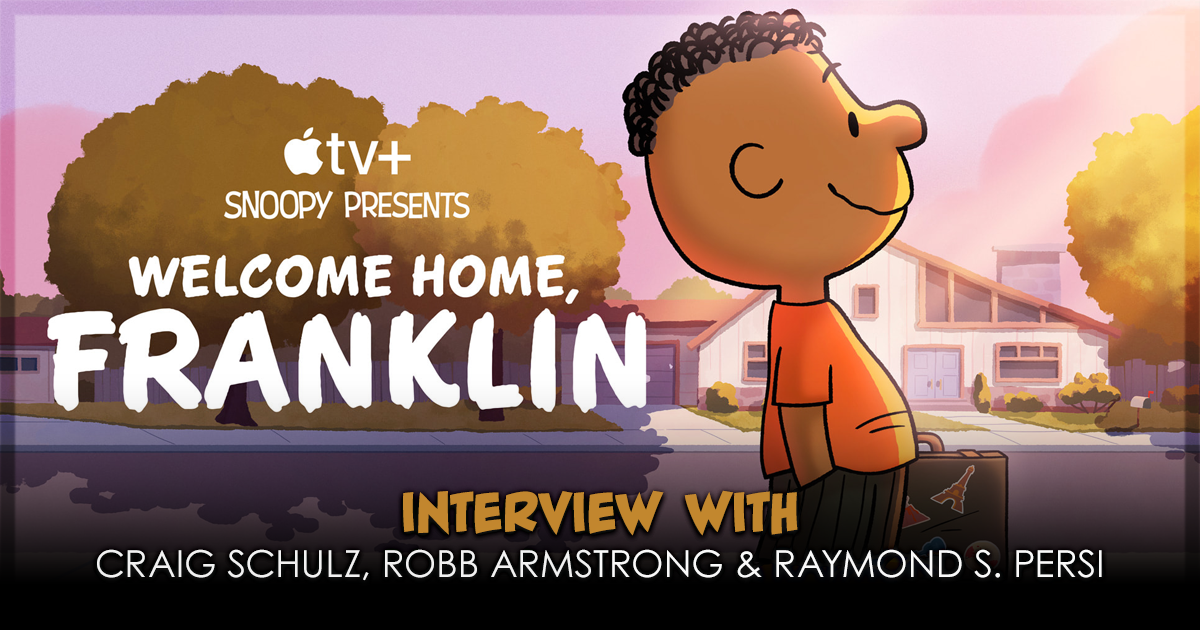Franklin Armstrong was the first black character in Peanuts. He’s also the character that the newest Snoopy Presents animated special is all about. Welcome Home, Franklin is Franklin’s origin story. First introduced in 1968 after the assassination of Martin Luther King, Jr. and at the behest of teacher Harriet Glickman, Franklin was a barrier-breaking character and helped children and adults see themselves in the “funny pages” for the first time.
The new kid in town, Franklin, uses a notebook filled with advice on friendship from his grandpa as he tries to fit in with the Peanuts kids. It doesn’t quite work out until he finds out about the Soap-Box Derby. But he needs a partner, and that’s where Charlie Brown comes in. Through building their car, the duo also develop their friendship. Can their new friendship survive as the pressure mounts and the derby gets closer? That’s what we find out in Welcome Home, Franklin. It’s sweet, heartwarming, and the perfect short film to watch with the whole family.
Franklin’s special is the latest in a series of cute specials from Apple TV+, giving characters their chance in the spotlight. We sat down over Zoom with Craig Schulz, son of Peanuts creator Charles Schulz, as well as Robb Armstrong, who created the comic Jump Start and wrote on the special, and special director, Raymond S. Persi.
Our Welcome Home, Franklin interview was such an interesting conversation with Schulz, Armstrong, and Persi. We discussed some differences between one-inch comic panels and a fully living and breathing television special. Armstrong shared some deeply moving sentiments about becoming part of the Peanuts legacy and the responsibility he feels. And Persi talked about having a diverse crew of people involved with the project, and how important that was to help ensure it connected with a broad group of people.
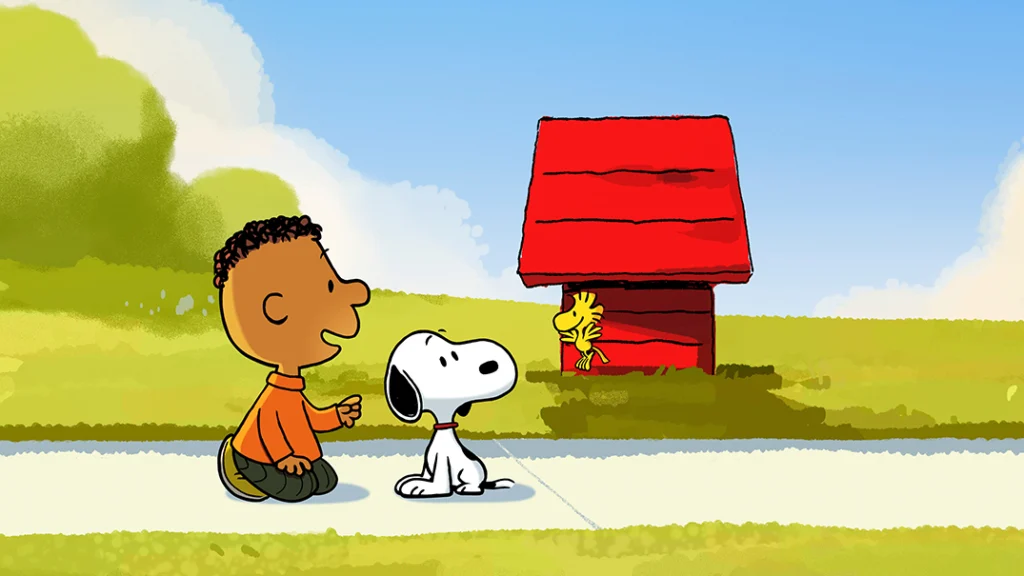
The Interview with Craig Schulz, Robb Armstrong, and Raymond S. Persi
[Editor’s note: This interview has been lightly edited for clarity.]
Ayla Ruby: Okay. So can you all talk about the idea to bring this to screen and how that came about and how it evolved? And also, was the intention always to premiere during Black History Month? Because that’s awesome.
Craig Schulz: Well, I think the premiere, Apple probably decided upon that because the show’s been in the can for quite a while and Franklin’s really just part of a series that we have done under the name Snoopy Presents. And this is probably, I think number seven in the series, Raymond? I’m not sure. I think it’s number seven.
Raymond S. Persi: Maybe, yeah.
Craig Schulz: We have one more coming out later in the year.
Raymond S. Persi: Six or seven, yeah.
Craig Schulz: Yeah. And we purposely made this one of the last ones because we knew it was probably one of the most important stories we ever told within the group. And within that, we spent a lot of time crafting the story and making sure it was true to not only the characters, but also the comic strip and my dad’s legacy.
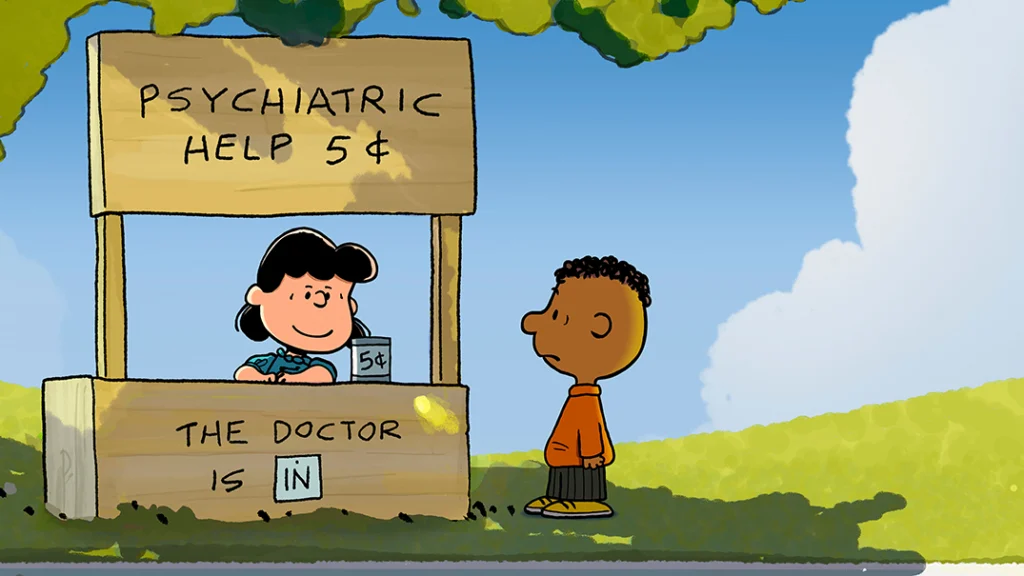
On Franklin in Peanuts compared to in Snoopy Presents: Welcome Home, Franklin
Ayla Ruby: So the comic strip, he was initially introduced. Can you talk about some of maybe the differences and some of the things that were the same, that were in the special versus in the comic strip? Because I saw the beach ball scene, there were some things that were very sweet.
Craig Schulz: Well, I think the main difference is you’re expanding the universe that you see them in. Within the comic strip, they’re a character on a page in a 1 by 1-inch frame in newspaper. You can’t quite tell the same story you can when you actually get them walking and talking and moving and the animation, the expressions you can create.
Craig Schulz: Robb and Raymond both know that you take an animated character and you move an eye that a little bit or a mouth line, you can create tremendous emotion out of that thing. And I’ve told Raymond many, many times that I was kind of blown away by the animators that created Peppermint Patty, one of our specialists. I was like, “She was tremendous.” So I gave them credit on all these things. The animation is wonderful and the emotion they can create. So, yeah.
Raymond S. Persi: The spirit’s the same, I think.
Robb Armstrong: For sure.
Raymond S. Persi: It’s about a kid who’s new to town and meets these crazy people in this neighborhood and he finds his place eventually in it. It’s like that kind of happened in the strip, and this was your guys’ chance to kind of expand upon that idea.
Robb Armstrong: Yeah. I use the phrase emotional content a lot. What I mean by that is there was great emotional content in Charles Schulz’s original newspaper comic strip. It’s what separated it, by the way, from every strip before it and every strip after it. The emotional content, the quotient was very high. It’s actually unreachable. This will never play itself out, ever. It’s an incredible accomplishment.
Robb Armstrong: Now how do you accomplish that in this? You use that emotional content but you put it into actions, meaning the character of Franklin can now encounter each Peanuts character in one work of art. Something you can’t really do in the comic strip, you have to follow it for months or years. He can actually walk around, encounter Snoopy, have a reaction. Lucy, he can encounter Lucy, she can react to him. And you know when Lucy reacts to you, it’s not good. If he has the nerve to talk back, she’ll just make it worse and then of course hand him a business card and say, “Come back for more talking. You’re in a lot of trouble.” It allows for a back and a forth and a back and the forth. I know as a newspaper cartoonist, it’s hard to get that, even if you dedicated yourself to it for years. And the fact that we’ve done it in one 40-minute special is quite stunning.

On the responsibility of carrying on the Peanuts legacy with Snoopy Presents: Welcome Home, Franklin
Ayla Ruby: You mentioned you’re a newspaper cartoonist, and I know you have quite history with Franklin and with Peanuts. So you partially wrote this special.
Robb Armstrong: Yes.
Ayla Ruby: Can you talk about how writing for animation, and I think you touched on that a little bit, is different than writing for this still medium?
Robb Armstrong: My expertise is writing my own comic strip. [Jump Start] So just be clear, I didn’t invent Franklin.
Ayla Ruby: I know.
Robb Armstrong: I’m not responsible for the IP. That is Sparky Schulz’s creation. But he was my friend and I mean, he was my friend, a dear friend of mine. And when he passed away in the year 2000, I had a hard time sitting… I never have a hard time sitting in front of my drawing table. My wife is sitting right over there. She’ll tell you I’d rather be there than anywhere. It’s what Craig hinted at when he said Schulz had a family, but treated these characters like his family. I know exactly what he’s talking about. By the way, that was some confession. That’s amazing.
Robb Armstrong: But when I’m asked to be a part of my friend’s creation like this, and I’m invited by the Schulz family to do this, it’s not a compliment. They’re not being nice. They’re doing what Sparky Schulz did when he was alive. He’s shining his light on me. He’s saying, “I’m going to rename one of my characters after you.” His son says, “I want you to come and participate in this project.” Schulz’s widow, Jeannie Schulz, says, “Come sit on a board of directors at the museum I’ve constructed to honor my husband.” These are not people being nice. They are nice. This is a responsibility in carrying on the legacy of one of the greatest men who’s ever lived. And I have a small role in it and it makes me huge. I got a tiny part and it’s huge. You understand?
Ayla Ruby: Yeah. That’s a very beautiful sentiment. How do you follow up with that?
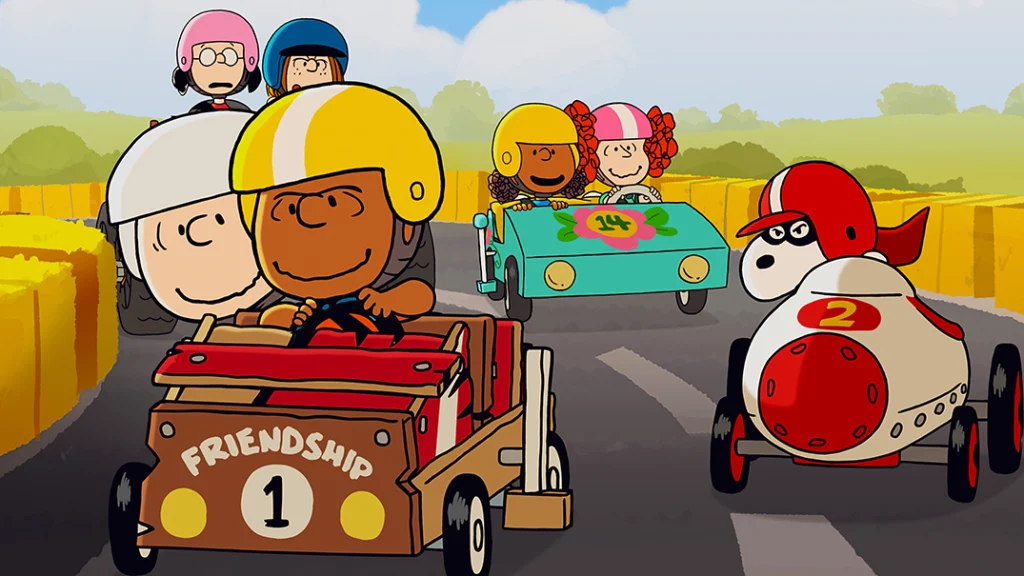
On telling Franklin’s story with a special in Welcome Home, Franklin
Ayla Ruby: For all of you actually, can you talk about those conversations saying that you wanted to tell this story?
Raymond S. Persi: Well, one thing I could say is once we had the script that these guys wrote, I put together a crew and I really worked hard to try to make the crew diverse so that there’d be people from all walks of life that could have different perspectives on the story and Franklin’s journey so that as we were working on it, we could have a lot of discussions about how people felt about it and what they felt was an important thing to say or an important sentiment to put out there and so that the story could really connect with a lot of people.
Robb Armstrong: Yeah.
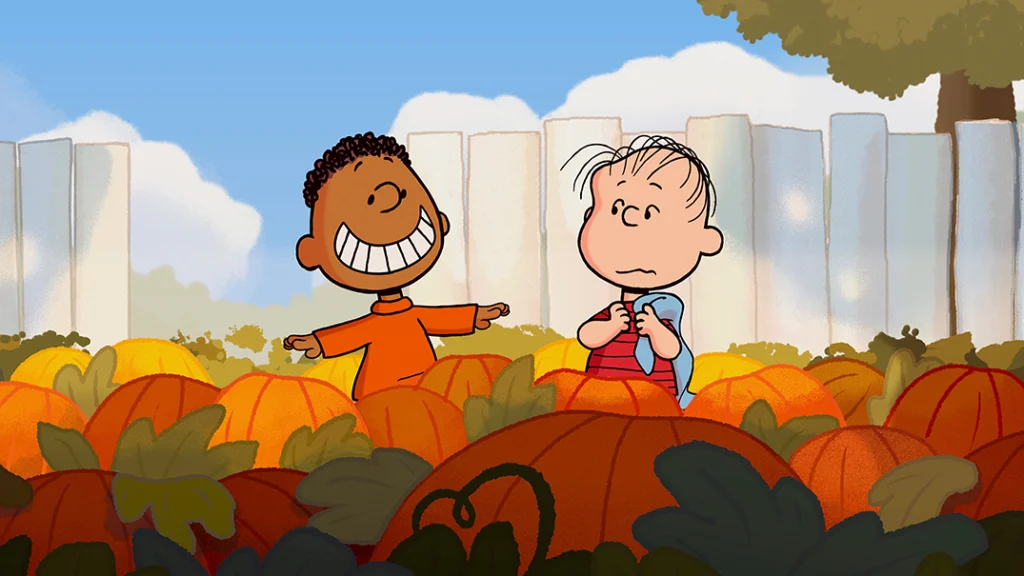
On the responsibility Charles Schulz felt in introducing Franklin to the world
Ayla Ruby: I think that’s wonderful. Is there anything that you want folks to know about this special?
Craig Schulz: I’ll just say that I think people need to appreciate the understanding of the responsibility my dad felt when he was going to introduce Franklin. It sounds weird, but it’s not unlike Oppenheimer and the A-bomb. You’ve got this thing in your hand and you can destroy the world with it, or you can make the world better with it, all in how you present it.
Craig Schulz: Now, any number of cartoonists would’ve done something different with Franklin than what my dad would’ve done. But he treated Franklin with the utmost respect. And when it comes to animation, we felt the same way. Any number of people would’ve taken Franklin, a Black character, made him hip-hop, rapping, break dancing or whatever, and it would’ve ruined the whole feel of who Franklin is as a person. And that’s what we try to embrace. And with Robb’s help, we think we hit it.
Ayla Ruby: Well, thank you all very much. That was wonderful.
Snoopy Presents: Welcome Home, Franklin will stream on Apple TV+ on February 16th.
Learn more about the special at the Apple TV+ website. Are you excited about Snoopy Presents: Welcome Home, Franklin? What did you think of the interview? Leave a comment with us on X @MoviesWeTexted.

